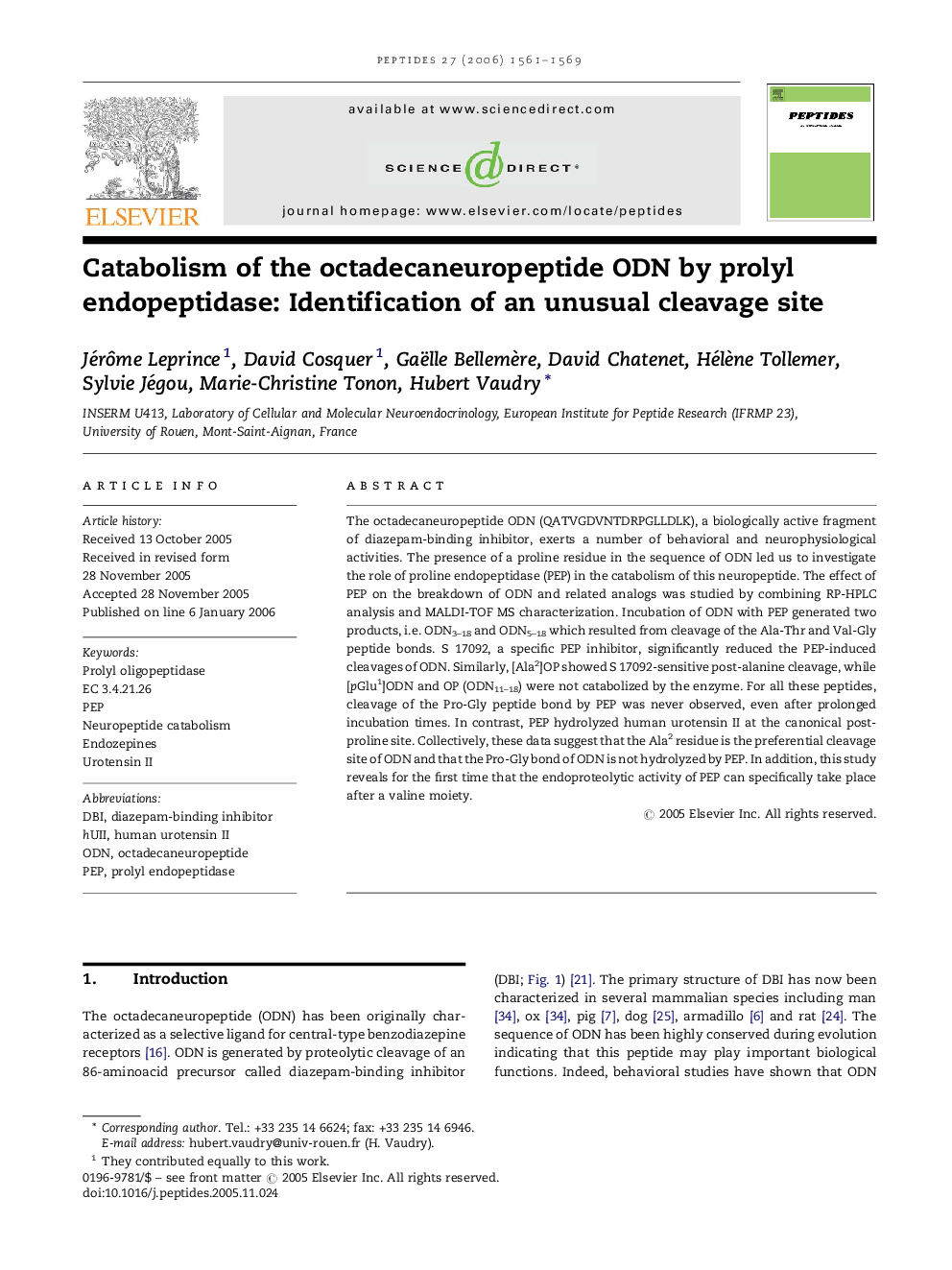| Article ID | Journal | Published Year | Pages | File Type |
|---|---|---|---|---|
| 2008642 | Peptides | 2006 | 9 Pages |
Abstract
The octadecaneuropeptide ODN (QATVGDVNTDRPGLLDLK), a biologically active fragment of diazepam-binding inhibitor, exerts a number of behavioral and neurophysiological activities. The presence of a proline residue in the sequence of ODN led us to investigate the role of proline endopeptidase (PEP) in the catabolism of this neuropeptide. The effect of PEP on the breakdown of ODN and related analogs was studied by combining RP-HPLC analysis and MALDI-TOF MS characterization. Incubation of ODN with PEP generated two products, i.e. ODN3-18 and ODN5-18 which resulted from cleavage of the Ala-Thr and Val-Gly peptide bonds. S 17092, a specific PEP inhibitor, significantly reduced the PEP-induced cleavages of ODN. Similarly, [Ala2]OP showed S 17092-sensitive post-alanine cleavage, while [pGlu1]ODN and OP (ODN11-18) were not catabolized by the enzyme. For all these peptides, cleavage of the Pro-Gly peptide bond by PEP was never observed, even after prolonged incubation times. In contrast, PEP hydrolyzed human urotensin II at the canonical post-proline site. Collectively, these data suggest that the Ala2 residue is the preferential cleavage site of ODN and that the Pro-Gly bond of ODN is not hydrolyzed by PEP. In addition, this study reveals for the first time that the endoproteolytic activity of PEP can specifically take place after a valine moiety.
Keywords
Related Topics
Life Sciences
Biochemistry, Genetics and Molecular Biology
Biochemistry
Authors
Jérôme Leprince, David Cosquer, Gaëlle Bellemère, David Chatenet, Hélène Tollemer, Sylvie Jégou, Marie-Christine Tonon, Hubert Vaudry,
